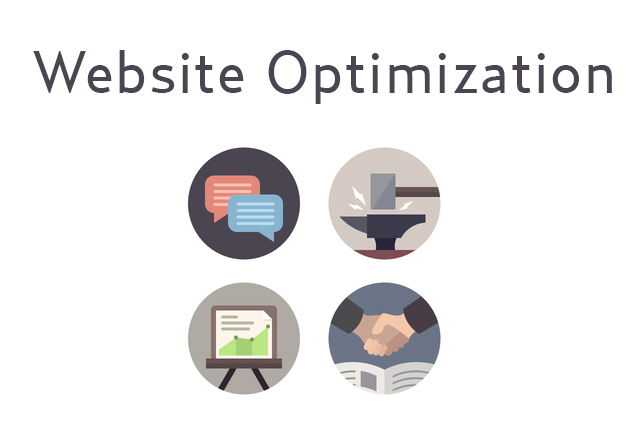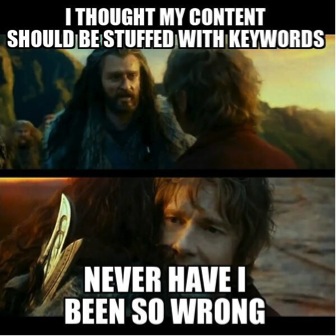
A website’s design is not dependent on its visual flare of the amount of things you’ve managed to fit on one page, it’s about usability and utility. These two elements are what define a successful website, not the amount of visual flare. Just like people, the beauty of a website needs to come from within. A hollow shell will crack easily, while a strong foundation will stand the test of time.
A user-centered approach to website design is a basic concept that we’ll expand upon as we move into this list of 8 different approaches to website design that will increase your traffic and impact your conversions in a big way. Remember, design is more than just the visual, it goes far deeper. For more information on developing and growing your website, see this blogging resource.
Effective Website Design: 8 Ways to Cater to Your Users and Design for Them
Despite the difference in setting, the people who come into your website aren’t all that different from people who shop in a store. Your storefront is just a virtual one. Just like shoppers casually walk through a store, letting their eyes wander, so too will your readers scan your content. People don’t read from beginning to end in most cases, they usually browse, looking for specific cues that entice them to read on.
People on the internet are looking for several things when they visit your website, these actionable concepts will be further exemplified in the coming approaches, but keep these characteristics in mind as you read:
● Users scan, they don’t read.
● Customers want instant gratification, you have to meet expectations fast.
● Web users choose the first reasonable option they see.
● Quality and credibility are something all users look for in a website.
● People want control and consistency in a website.
1. Create Obvious and Self-Explanatory Web Pages
There is a concept called Krug’s Laws of Usability, and the first of these says that a web-page should be “obvious and self-explanatory.” The goal of your website should be to remove any and all questions of what each page does and what purpose it serves. In essence, your visitor’s first reaction shouldn’t be this:
Ultimately, simplicity and ease of use is your friend here, so focus on these characteristics for your web page:
● Make it easy to grasp the concepts on the page
● Present features and facts, show why your product is valuable
● Make it simple and easy to navigate across the various pages of the site
2. Utilize Visual Elements to Focus User’s Attention
The human eye instantly recognizes and is subsequently drawn to patterns, shapes, and certain words that catch our attention. A controlled use of visual elements like large words, colorful shapes, or boxed phrases can be used to establish the focal point of the page in the first few seconds after the visitor arrives.
Using words like “Free” and “Trial” are good because they help people feel like they aren’t committing, yet they still have an opportunity to see what you’re offering them. If users can easily navigate a page and a site, that have a better sense of where they are and are more inclined to stay and listen to your message. A lack of questions helps build a trust toward your brand.
Here’s how you can do this today:
● Design your web page with as little clutter as possible. Create a design with simple shapes and colors that direct the user’s attention to the focus of the page.
● Make it obvious how they can progress through large font and concise directions
● Eliminate any and all questions about what your message is trying to say and what you want from a user that visits the page.
3. Utilize Effective Writing Practices
While there’s nothing wrong with a little style, it’s important that your website doesn’t dance around the subject with brand specific terms and confusing vocabulary. Case and point, your text needs to be broken up into easy to read blocks where you utilize italics and bold to call out specific keywords and steps in your process.
Speak in a business oriented language. Instead of writing “See how we can help you today” or “Start saving now!” just keep it simple and make the button or link say what it’s meant to say: “Sign up.” Your visitors will be less hesitant to click links if they know exactly where it’s taking them. Doubt is your enemy here.
Here’s how to implement this today:
● Design your pages with clear and concise text and avoid fluffing up the text around the actual point of your message.
● Structure your text in easy to read paragraphs and bullet points, treat it like someone is scanning the page and needs to find the points quickly and easily.
● Use standard business language, don’t try to embellish the message with brand specific terminology or fancy wording.
4. Remember That White Space Isn’t Necessarily a Bad Thing
Contrary to what you may think, white space is a good thing. The occasional break in color or formatting allows our eyes and our mind to reset. Constant sensory assault doesn’t help, in fact it burdens your reader and makes them want to leave the site. The first action of an average reader is to divide your web page into pieces of information that they can scan easily.
White space allows you create a simple and effective structure to your web design that allows the eye to easily scan the content. Simon’s law dictates that Hierarchical structures reduce complexity, so providing a page layout that is clearly separated and structured with white space as the dividing element is the best way to keep the content easily digestible.
Implement this today with these tips:
● Divide the content into a structured set based on the importance and create a hierarchy of information that is divided by breaks in the form of white space.
● Don’t be afraid to allow white space in your design, it reduces the visual and mental load of the page, making it easier to read and comprehend.
5. Define a Visible Language
Communication is about more than simple words. Your content speaks a message beyond what’s written on the page. It goes deeper to communicate through the structure of your design, and the visual message you’re sending. A paper by Suzanne Martin entitled Effective Visual Communication for Graphical User Interfaces put forth three actions that create a visible language: Organize, economize, and communicate.
The first action, organize, refers to the architecture of your page. You need to have consistency in the way you lay out the text, and establish a relationship between the various topics of content on said page. This leads into the concept of economizing the page which is simply using the least amount of visual cues to provide a clear and concise message to your readers. It’s also important to create distinction between the elements of your content. Only feature the aspects that make them stand out and emphasize those accordingly.
Finally, communicating your message through the visible language involves providing the user with the ability to understand the various elements of your message through simple and easy to understand design.
Here’s how to implement this today:
● Approach every aspect of your web design with the idea of doing a lot with very little. Economize your pages to be effective without being cluttered.
● Once you’ve decided on a structure, don’t waver. Consistency across your pages will create a more cohesive whole.
● Emphasize and separate your points, featuring their unique properties.
6. Use What Works
Conventional methods of web design fall into that category because they tend to work well. Don’t be afraid to adopt methods that are proven. It’s always good to try new things, but there’s also something to be said about not fixing what isn’t broken. Social media buttons for example are usually represented in a similar fashion across all websites. If there were different ones for every site, the inconsistency would be detrimental to everyone involved.
Users have a specific expectation for your site when they arrive. It’s best to meet that expectation, at least from a design standpoint, before you wow them with your content. Steve Krug put it perfectly when he said “Only innovate if you know you really have a better idea.
Put this in action today:
● Visit other websites in your niche and see how they’re laid out.
● Find common elements between high ranking sites and implement them yourself
● Only change when you’ve found that something established doesn’t work, or you have a truly better idea.
7. Don’t Test Your Visitor’s Patience
At some point your website is going to ask something of your visitors. When this happens, strive to make it a process that is simple and easy to understand. People don’t want to sign up for your email newsletter if they have to fill out a long form. Just a name and a email will suffice. Offer some free features that have little to no barrier between them and the user. This way they can try out your service or see your content without having to cross through a registration wall.
Put this into action today:
● Find ways to showcase the features of your service or product that users can test out without having to register first.
● Make the registration process fast, less than thirty seconds preferably.
8. Design Your Content for People, Not Search Engines
We’ve all heard plenty about SEO, I’m sure, but it’s important to remember who you’re writing for. While a well optimized article or post will rank high on a search engine, it does nothing if it cannot provide value to the reader or offer them a solution to their question or problem. Search engines like Google are striving to implement new updates that better focus on these kinds of articles, so don’t be afraid to focus on your readers.
If your content is relevant, your design is simple and elegant, and your keywords are there without being stuffed in, the SEO will take care of itself. It’s always important to remember these techniques, but never sacrifice the user quality of the website to better serve a search engine.
Here’s how to start doing this today:
● Read up on advanced SEO techniques, but don’t force keywords into your content or your design.
● Make sure everything you do is relevant and seeks to solve a problem or answer a question.
Jumpstart Your Web Design with This Helpful Plugin
If you’re using WordPress, which most users are, you know that plugins are essential to building your website. A great plugin to use that opens up a suite of other apps that are integral to building your website is one called SumoMe. This plugin will grant you access to tools that collect emails, provide social sharing buttons, and more.
When you’ve decided on your website’s layout, the next step is making it useful and accessible. This plugin allows you to do just that.
Final Thoughts
There’s no defined method for designing a website. There are, however, a lot of things that work very well and tactics (like the ones above) that facilitate a strong and simple design. Take these concepts into account and apply them to your site today for an instant transformation that will increase traffic and conversions. Thanks as always for reading and tell me about your designs in the comments below.
Author bio: Venchito Tampon is the sole author of Digital Philippines, a link building blog that publishes actionable link building strategies and content marketing techniques to new and advanced internet marketers. He also provides link building services to local and international clients based.



